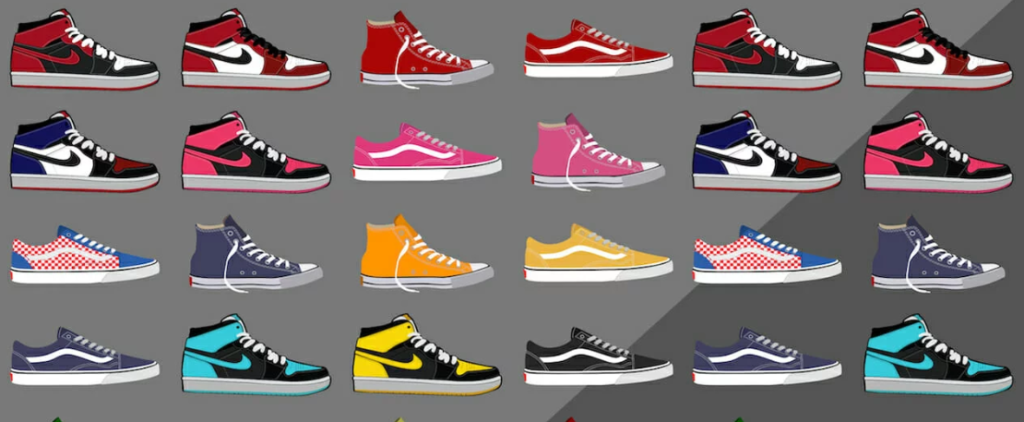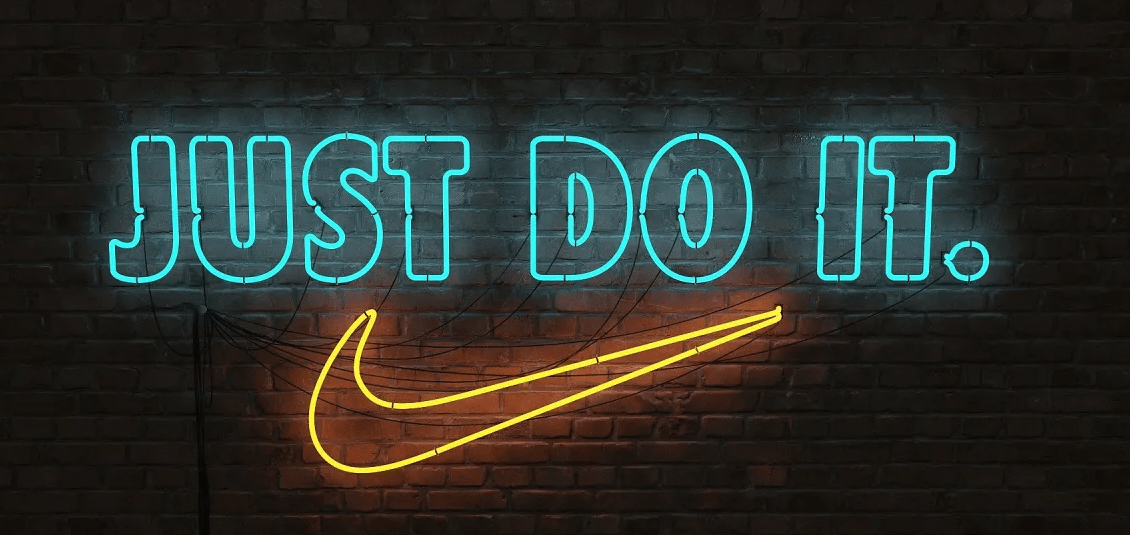Nike is a popular and leading shoe brand serving its customers for around more than 3 decades has an amazing story from the past. Here in this article, we will discuss the marketing strategy and a detailed case study of the popular shoe brand Nike.
Table of Contents
Nike Just do it: a hymn to daily challenges
More than forty years have passed since the first shoes with the famous mustache appeared on the market, but Nike’s success does not stop. The Oregon company continues to lead its competitors with annual sales of close to $30 billion and growth of 10% over the past five years. The brand is unstoppable, just as customers want it to be unstoppable by wearing their shoes during sports. ‘Just do it: Nike’s motto has been the same for almost three decades, and it will remain so for a long time to come.
It perfectly represents not only Nike’s consumer community but also the company itself, simply and quickly. By the way, recently it turned out that this slogan was proposed by advertiser Dan Wieden, who was struck by the last words of a death row inmate in Utah. “Let’s do it,”
In a somewhat grotesque sense, the man had accepted his latest challenge. It was a short step from here to the famous ‘Just do it: The goal of Nike’s marketing strategy is, in fact, to make its products real allies in their consumers’ daily fitness struggles.
The principal was running and waffle
The way they came to market strongly and positively influenced Nike’s subsequent marketing strategy. The landmark, odd to say, was a waffle maker.
It all started when University of Oregon coach Bill Bowerman founded Blue Ribbon Sports with his athlete (Philip Knight). In addition to training some of the best American athletes and trading sneakers, Bill also developed an interest in running, a practice that was unpopular at the time.
He examines, he observes, he proposes: in 1966, together with a cardiologist, he publishes the book Jogging, which is today seen as the launch pad of the running craze that swept the United States in the 1970s.
The importance of creativity (and storytelling)

Meanwhile, relations with Onitsuka, the manufacturer of the Tigers, begin to deteriorate: Bill is convinced that thanks to his running knowledge, he can do better and design and manufacture better, lighter running shoes. to guarantee athletes the highest performance. And at this point, in the early seventies, Blue Ribbon Sports changed its name to Nike (referring to the mythological winged personification of victory): The company, previously a simple sneaker distributor, has thus become a manufacturing company.
History tells us that the first soles designed by Bill were made through his wife’s waffle maker: Nike’s marketing strategy does not fail to evoke this humble yet brilliant origin at times. They didn’t eat waffles at Bill’s house anymore for several months, but that little sacrifice was definitely worth the candle.
Today, his company is actually worth $71 billion
$19.7 billion brand
Nike Moon Shoes, the first product released under the umbrella of Nike, were developed from a handmade model printed with a waffle maker. Compared to current offerings, the simplicity of these shoes disarms: however, what will be the spirit of the company is already in this first running product, for which the famous ‘mustache’ was also created. we know today.
The creator of the symbol was a design student with a salary of $35. It’s interesting and shocking to note that today this brand is worth $10.7 billion, and without it and under another name, the company’s value would drop from its current $71 billion to $52 billion. long on the value of a good designer in the birth of a business.
Nike’s marketing strategy before marketing

Nike running shoes hit the market at the very beginning of the running era, which Bill Bowerman’s book initiated and caused, at least in part. Was it a coincidence or was it the first bold move in Nike’s successful marketing strategy? Neither, or rather a bit of both.
What we need to understand is that Bowerman did not publish this book, among other things, to sell his product, which was conceived and brought to market only years later.
No: He wrote that brochure because he really wanted to promote running and its health benefits. Of course, this wasn’t a very witty snippet of Nike’s hypothetical, newborn, or even early marketing strategy, but it could have been, nonetheless, especially given the results it brought.
By Michael Jordan and the Beatles
However, from then on, each Nike marketing strategy was deliberately and rationally designed: as early as 1973, for example, the company signed its first sponsorship contract with a tennis star, Ilie Nastase. Since then, the faces of athletes that Nike has incorporated into its products are innumerable.
First of all, we all know Michael Jordan: In 1984 the most famous basketball player became the brand’s flagship man, sponsored by ‘Air Jordan‘, a line of apparel and footwear for basketball that he still bills to the company. with $2 billion every year.
Air Jordan’s first promotional release

Nike even managed to use a Beatles song for a television commercial on the occasion of the 1987 Air Max release to give more power to its marketing campaign: no one from Liverpool had ever managed to brag about a song by the band. commercial. The impact of this ad was enormous: imagine the Air Max line still being produced. To date, there are more than 40 models.
Focus on customers also through social media
Jordan, Ronaldo, Ibrahimovic, McIlroy: Over the years there have been many prestige faces to Nike’s marketing strategies, as mentioned, but the core message has never changed. Even better: from the seventies to the present, the brand’s voice and identity have remained true to themselves, always putting consumers’ needs before their products.
The aesthetics of communication have changed, and the media to convey their message to has multiplied, but the brand has never betrayed itself or its customers: take a look at the official Nike pages on the social network to understand this. The way the company interfaces with Facebook or Instagram shows that its presence on those platforms isn’t driven by new and shiny business goals: no, Nike is on Instagram because their customers are there too.
And communication on these pages is not limited to an aseptic commercial offer, it is far from it: each post is designed and created to convey something of value to the user-consumer. So, in the spirit of the company, Nike’s social updates are mostly motivational messages for their athletes - yes, Nike’s philosophy is that anyone with a body can be an athlete too. That’s why the focus of corporate branding remains on helping clients do what they love to do best, whether it’s running, playing basketball, soccer, or tennis, anytime and in any situation.
Beyond shoes: technology to be closer to the consumer

Athletes first, shoes second: this is the mantra of Nike’s marketing strategies, and it was this thinking that prompted the company to launch Nike, the first mass-produced high-tech product, in 2006. + iPod Sports Kit. It was a risky move designed to set the company firmly apart from its competitors: Once again, and more than ever in digital devices, the focus was on athletes rather than shoes. The kit allowed to measure the distance and speed of the race.
Oddly enough, yes, the product was Nike in every way, but everything was actually made by the iPod. Nike, on the other hand, was content to sell a chip to have ideas and put them in shoes, and a device for wireless connectivity.
In short, in this case, the partnership with Apple can be considered the best possible partnership. Over time, Nike+ devices have improved upgrade after upgrade, giving up first the iPod and then the chip: in 2010, everything was replaced by an iPhone app, and more than 6 million people are connected to a virtual community where they can analyze and share their sports. achievements.
In this way, as a complement, Nike had the opportunity to get closer to its customers, examine them closely, and communicate with them frequently. This technological leap, which established a permanent relationship with the consumer, also made it possible to reduce advertising costs by 40% without compromising sales figures.
Nike’s goal
The final piece of Nike’s marketing strategy for a phased approach to the customer is the FuelBand bracelet, which calculates energy, and therefore – approximately – calories burned throughout the day. To make the data collected by the bracelet more reliable, Nike has created an online platform where customers can compare their energy consumption. Therefore, the athlete is in the center, the product is on the side, and the brand is always ready to motivate its consumers/athletes more.
This long-term strategy is explained above all by looking at the origins of the brand: it was born for running, not for team sports. That’s why Nike’s goal is the lone and even somewhat unruly runner who at times runs aggressively to overcome their physical and psychological limitations. The effectiveness of this message was so effective that it persisted even as these lone athletes entered a community fueled by Nike through social media, which continues to differentiate the brand from its competitors.
Conclusion: selling shoes without selling shoes
That’s why the history of Nike’s marketing strategy teaches that in order to properly launch a product, it is necessary first and foremost to understand what consumers need.
Once their desires are understood, a marketing campaign can be created through their products that can provide all possible solutions. For example, Nike realized that people needed a new way to stay fit, not shoes, so they offered to help them achieve this by selling shoes.
In addition, Nike’s marketing strategies teach that every consumer communication act of a company must create value, especially over the web: if you’re not solving problems, not providing real answers if you’re not helping your business. to improve the daily lives of viewers, then you inevitably have the wrong approach.
Marketing isn’t just about selling your product, or at least on the surface: Bill Bowerman didn’t start an empire by selling shoes, but by selling the art of running to customers who responded by purchasing billions of Nike Moon Shoes and by Air Max.
Other Related reads:
Electronics Giant Apple (Think different) Marketing Strategy
Puma Marketing Strategy Between Competition & Sponsorship
Red Bull Marketing Strategy: The Case Study
A go through into the marketing strategy of Starbucks






4 Comments
Todd
I don’t even understand how I ended up right here, however I believed this post
was great. I do not realize who you’re however definitely you are going to a famous blogger if you aren’t already.
Cheers!
Nichole
Hey there! I’ve been reading your site for a long time now and finally
got the courage to go ahead and give you a shout out from
Lubbock Texas! Just wanted to tell you keep up the great work!